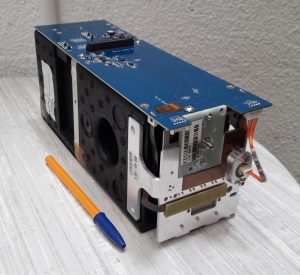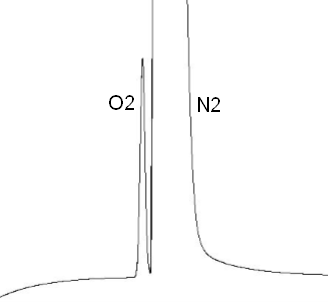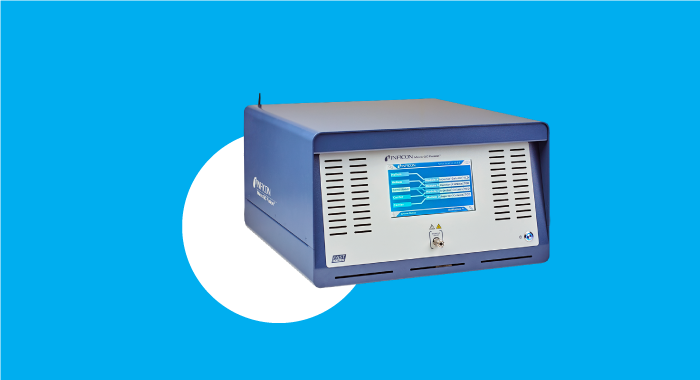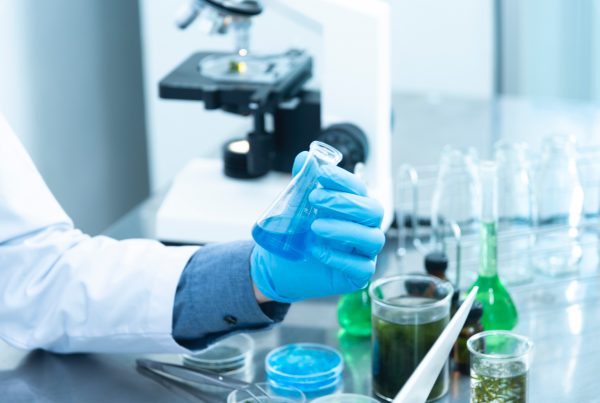Each time a new device is installed, we draw your attention to the operating instructions for your Micro GC Fusion.
This modular technology is very robust. One device can perform millions of measurements without requiring any maintenance.

Micro GC FUSION module: Miniaturized gas analyzer
To use your device in the best conditions, it is very simple, just respect the 4 golden rules !
¦ Carrier gas quality ¦ Carrier gas pressure ¦ Quality of the sample ¦ Sample pressure ¦
This article focuses on the first rule, the Vector Gas Quality
Purity 99.9995% or higher (equivalent Alpha gas 1 or 5.5 depending on the supplier)
The MicroGC can work with different gases depending on the application. In order of popularity: helium, argon, hydrogen or nitrogen.
The carrier gas, which flows through the columns of each of the analytical modules of your Micro GC, is critical.
This is the only utility needed to operate your device and it consumes very little.
Also, do not neglect its quality !
The quality of a carrier gas is its purity. 99.9995% purity means that your gas contains less than 0.0005% impurities.
These impurities are usually moisture, air (O2 and N2) and traces of hydrocarbons (HC). If you have any doubts about the quality of the gas you are using, you will find indications on the cylinder.

Helium 5.0: Insufficient purity for a Micro GC
Here are some tips about the carrier gas: the gas passes through the chromatographic column and then onto the detector.
Both can be affected by poor quality gas.
First of all the column: it can be sensitive to certain compounds.
Let’s take the example of the molecular sieve column. This column allows the separation of so-called permanent gases (H2, O2, N2, CH4, CO…).
But this column retains moisture. This is the molecular sieve that is used in the gas purification filters that are sometimes found in laboratories.
If your carrier gas contains moisture, the column will act as a filter…and will be loaded with water that it will retain.
By retaining this water, which will occupy the “active” sites of your column, it will lose its separating power and become less efficient.
It will then be necessary to carry out a regeneration to clean it.

MS5A chromatogram: O2 and N2 separation becomes difficult, a regeneration will be necessary
If your carrier gas contains oxygen, this can be more damaging to the column since at high temperatures, depending on the type, the stationary phase can be oxidized and irreparably damaged.
For the column, a poor quality carrier gas therefore leads to a variation in retention times and accelerated aging of the column.
At the catharometer (µTCD), traces of oxygen can damage the detector filament. In the long term, it can become noisy and, in the worst case, a rupture of one of the filaments can be observed (which requires its replacement). However, this is very rare as the detector is equipped with a safety device.
Less visible but just as important for the user: if your carrier gas contains pollutants, the measurement you make of these same pollutants is affected as well! Indeed, as the TCD makes a comparison between the pure carrier gas (supposedly pure) and the carrier gas coming from the analysis column, you will not be able to measure less impurities than the carrier gas itself contains. It is exactly for this reason that for measurements of very low contents, a carrier gas of higher grade is recommended. Sometimes negative peaks can even be observed. One then concludes that the sample is purer than the carrier gas…which is obviously not normal !

Micro Catharometer Detector (TCD)
The purity of the carrier gas is therefore essential, as we have just seen, for your equipment and the results you will obtain. But having a good quality cylinder is not enough! It is necessary to ensure the purity of this gas up to the device. The implementation is therefore very important and often a source of problems that can easily be avoided.
Here are some tips :
1- Make sure your cylinder connection is clean and dry before installing the pressure regulator
2- Use a good quality pressure reducer for your safety, check the condition of the seal and change it if it is not in perfect condition.
A pressure regulator used for carrier gas should be reserved for only one type of gas!
Do not use a regulator that has been connected to another gas if possible. If you have no choice, perform several regulator purges (5-10 inflations/emptying) before connecting the gas to the microGC
3- Do not use plastic or polymer tubes.
Prefer copper or stainless steel.
Do not use recovery tubes that have seen other fluids (sometimes even liquids!).
The tubes must be clean and perfectly dry. Purge your line completely.
The microGC consumes very little gas. If the connected tube is full of air, you will eliminate this air through the device. This will take a very long time and the quality inside the modules will not be at all like the cylinder. We recommend to loosen slightly the fittings at the back of the device to create a leak, to purge the tubes for 30s and to tighten again, always under carrier gas flow. If these operations must be performed often, you can add a 3-way purge valve at the end of the line, which avoids touching the fittings.
4- If possible, control the entire line, from the cylinder to the appliance. If the unit is connected to a distribution system, make sure that the system is properly purged before installation and that cylinder changes are done properly so as not to pollute the system. If you use hydrogen generators to fuel your appliance, make sure that maintenance is done regularly to ensure that the output gas is clean and dry.
5- Finally, perform a leak test using an electronic leak detector or by testing the pressure resistance of the system. Avoid the use of liquid for leak detection, if liquid enters the tube it can damage the gas analyzer.
The other golden rules will be discussed soon. In the meantime, do not hesitate to consult our other articles.




